For the first time in many years, 4-4-2 has returned as La Liga‘s formation of choice in 2019/20.
After years of domination from 4-3-3, which is still the case in the big teams like Barcelona and Real Madrid, only two La Liga sides did not use 4-4-2 as one of their three most used formations in 2019/20, with more than half using the formation as their first choice more than any other shape.
What’s more, is that it has brought consistency to La Liga in terms of tactics.
The six La Liga sides who were most consistent in their tactical shape all boasted 4-4-2 as their primary formation, with three different sides using it for over 80% of minutes played.
This tactical analysis will examine this approach and how La Liga teams use this strategy.
The analysis of these tactics will provide insight into how different La Liga teams
deployed 4-4-2 in 2019/20, featuring Atlético Madrid, Getafe, Villarreal, Levante, Eibar,and Alavés
La Liga Formations: 4-4-2 With Asymmetrical Midfielders
An asymmetrical midfield four is crucial in the 4-4-2 system deployed in Spain.
This lies in an approach where a midfield unit is highly structured, allowing only one wide midfielder freedom to push forward into attack, with the opposite winger drifting into a more central or defensive-minded role.
Two of the best examples are sides that focus defensively, Atlético Madrid and Getafe, which have clear tactical philosophies under Diego Simeone and José Bordálas.
Javi Calleja also deployed a similar approach, albeit with a less structured and more fluid system, at Villarreal as they climbed up the table into Europa League spots following the restart.
As can be seen here, particularly in the case of Atlético Madrid, one wide midfielder plays in a more advanced position.
4-4-2 formations in la liga 2019/20: Club Atlético de Madrid & Getafe C.f
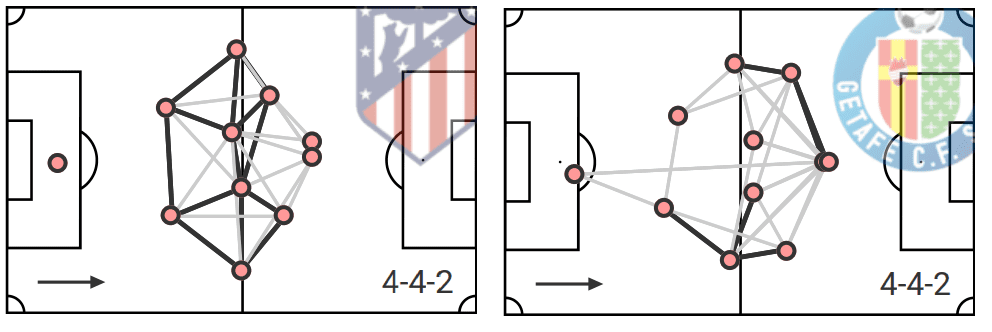
As can be seen here, Atlético provides a good example.
Koke plays on the right, with usually either him or Saúl operating as the narrow wide midfielder.
Thomas Lemar is on the left and has more freedom, allowing him more time to get back into a deeper defensive position as his team track back.
This works well for these two teams, given their offensive options, such as Lemar or Ángel Correa in the case of Atlético.
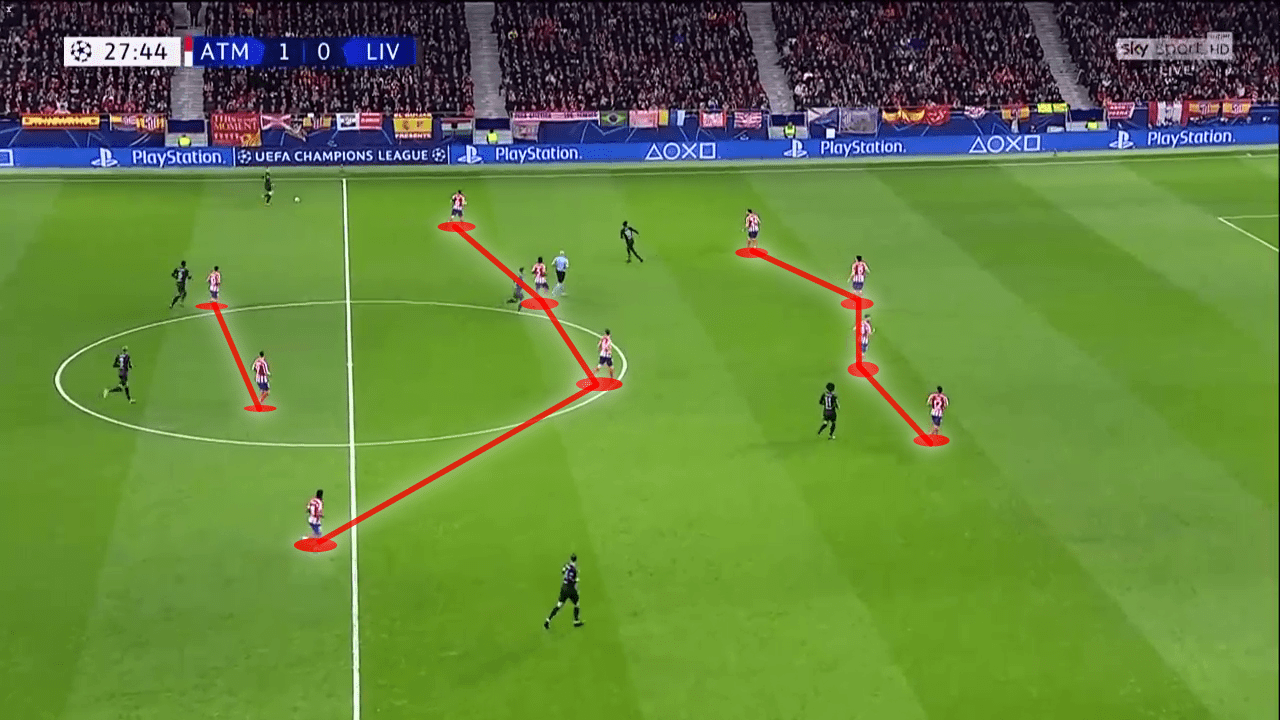
In Getafe’s case, the approach is slightly different.
While they use the same asymmetrical approach, they regularly choose to have Marc Cucurella, who leads the high press, on the left and makeshift wide midfielder Allan Nyom, traditionally a right back.
Here, Nyom can sometimes drop into a back five against superior opposition and drifts centrally, as with Atlético.
This approach provides more defensive stability and flexibility, which is vital to the approaches of both Bordálas and Simeone.
This means that for these two teams, 4-4-2 is the most appropriate formation and one that rarely varies, even in-game.
La Liga Formations: 4-4-2 With narrow Midfielders
Other sides do offer more width but look to rely upon their central midfielders in the middle.
Wingers play in a narrower position but are more advanced, and full-backs are almost level with the central midfielders but not pushing beyond.
This reflects where teams see their play dictated by central midfielders, hence why two of the best examples come from Levante and Villarreal, where their strongest players play in central roles.
4-4-2 formations in la liga 2019/20: Levante U.D & Villarreal C.F
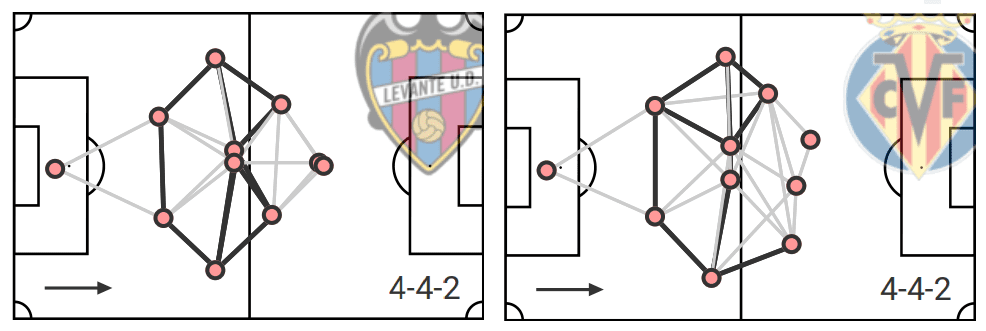
A good example can be seen here in the case of Levante.
José Campaña is a regular with either Enis Bardhi or Gonzalo Melero usually being the player to line-up alongside him in a very narrow midfield two.
They look to block off the central areas and force teams into attacking them wide.
Particularly when defending, they remain narrow to prevent central playmakers from finding space, in this case also preventing Leganés’ forwards from dropping deep to get involved in the game.
This approach aims to control the middle of the field without relying on a numbers overload with a three-man midfield.
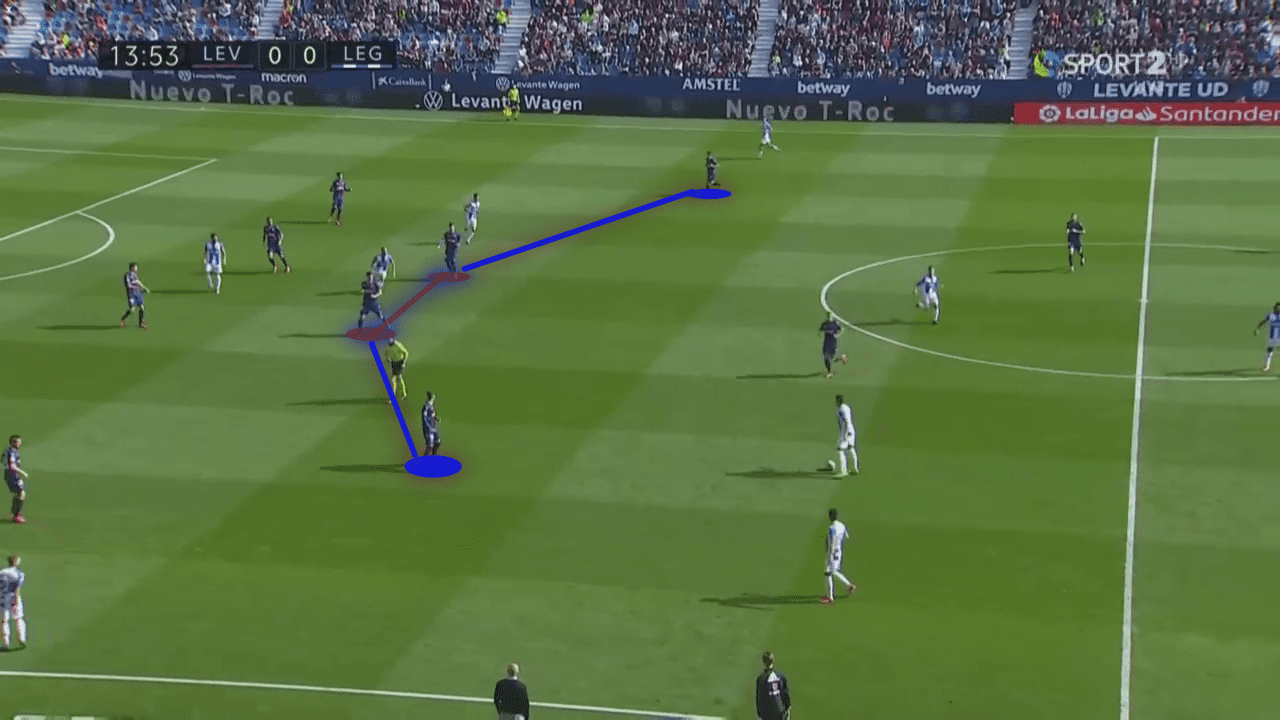
Villarreal operates in a similar way.
Here, we see more variation in central positions.
This comes as Santi Cazorla and Vicente Iborra would play more varying roles.
Iborra would typically sit into a deeper role, with Cazorla pushing on into a more advanced role.
In this way, Villarreal can almost reflect a 4-1-3-2 at times.
This change from Javi Calleja, particularly after the arrival of Paco Alcácer, which allowed him to play with two up front, was intriguing.
However, with Unai Emery’s arrival, Cazorla’s departure, and Dani Parejo and Francis Coquelin‘s arrival, that shape could change ahead of 2020/21.
La Liga Formations: 4-4-2 with High Wingers
The other option some teams use is to have very advanced wingers, almost always operating in a system that involves a high press.
This is the case with Eibar in particular, while Alavés also deploy a similar approach with a slightly different strategy.
In some cases, the 4-4-2 can almost look like a 4-2-4 as these wingers push on so high that their average position can nearly be alongside the strikers.
4-4-2 formations in la Liga 2019/20: S.D Eibar & Deportivo Alavés
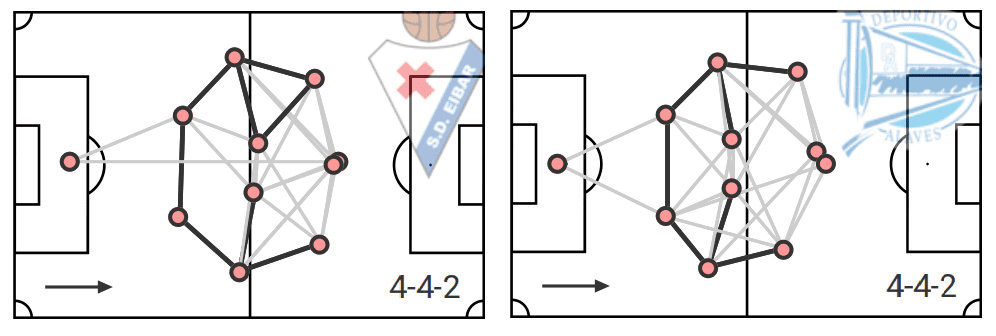
Eibar is the clearest example.
When in possession, Eibar’s wingers act as an extension of the front two rather than as an extension of the midfield.
As can be seen in the example below, wingers like Takashi Inui or Pablo de Blasis will drift into central areas while a striker moves wide, opening space for the wide man to attack while the full-back provides the ball from wide.
In fact, even when out of possession, they play a crucial role in the high press, which means that they pressure full-backs while the centre-forwards occupy the goalkeeper and central defenders.
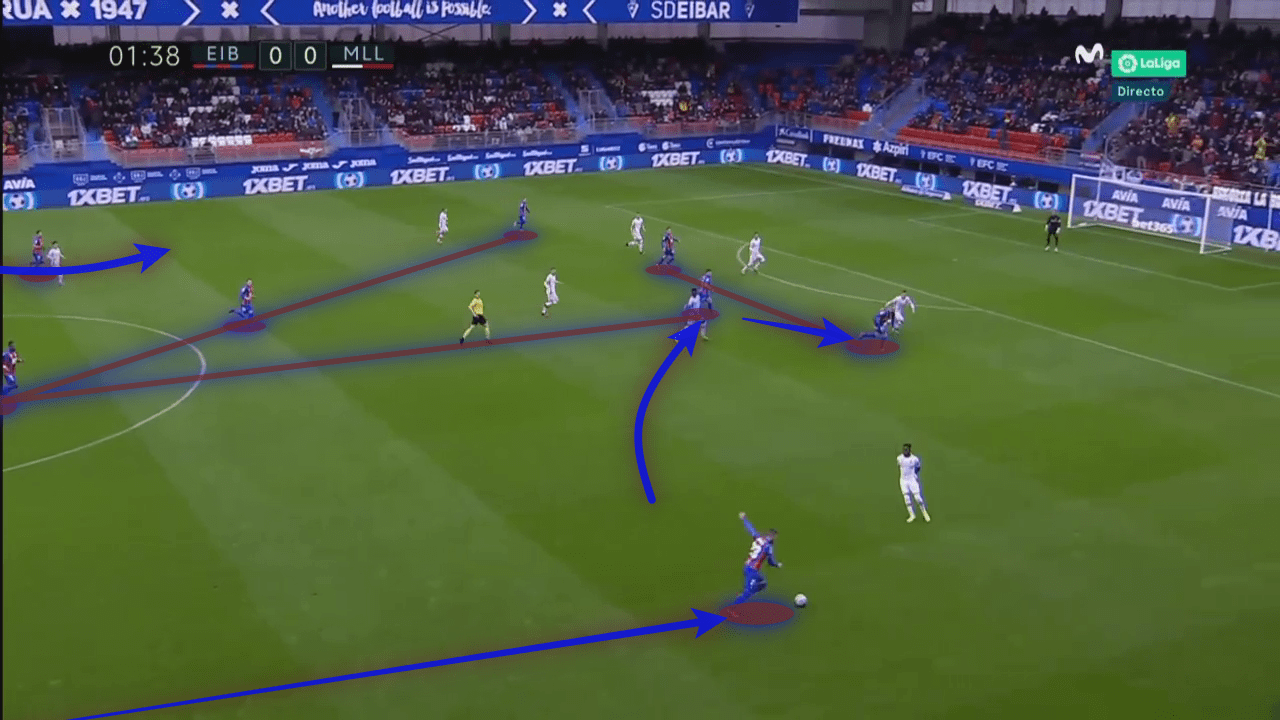
Alavés operate slightly differently, with their positioning taking place deeper without such a high press.
However, their wingers, like Oliver Burke, Aleix Vidal, Borja Sainz, and Luis Rioja, push up into a more advanced role and are frequently used in the transition to progress the ball forward.
This kind of movement is crucial to Alavés’ game plan. They stick to a wider position but drive the attack through their high positioning.
4-4-2 Formation Fever In La Liga: Even Real Madrid & Barcelona …
Barcelona and Real Madrid are the two sides who have most shifted away from this formation and 4-3-3 has been their style of choice for over a decade now.
The famous attacking tridents of Lionel Messi, Luis Suárez and Neymar or Cristiano Ronaldo, Karim Benzema and Gareth Bale typify this shape.
As these players have aged and moved on, these teams have stuck to the same tactical system, even as they now begin to consider alternatives.
However, this season has also seen both of these sides trial 4-4-2 at different times.
Early on in the campaign, it even looked as though Zinedine Zidane was seriously considering it for his Real Madrid team.
The signing of Luka Jović saw experiments early on in the season alongside Benzema in a front two, with two wingers making the shape similar to a 4-2-4 when in possession.
This allowed Real Madrid to overload effectively, but the poor connection between Jović and Benzema, with Benzema’s movement keeping him fluid while Jović stayed on the last man, and the Serbian’s poor form meant that it had not become a regular feature.
Instead, a 4-4-2 at the Bernabéu has allowed Isco into the team, acting as a second striker in a shape which was often more akin to a 4-2-3-1.
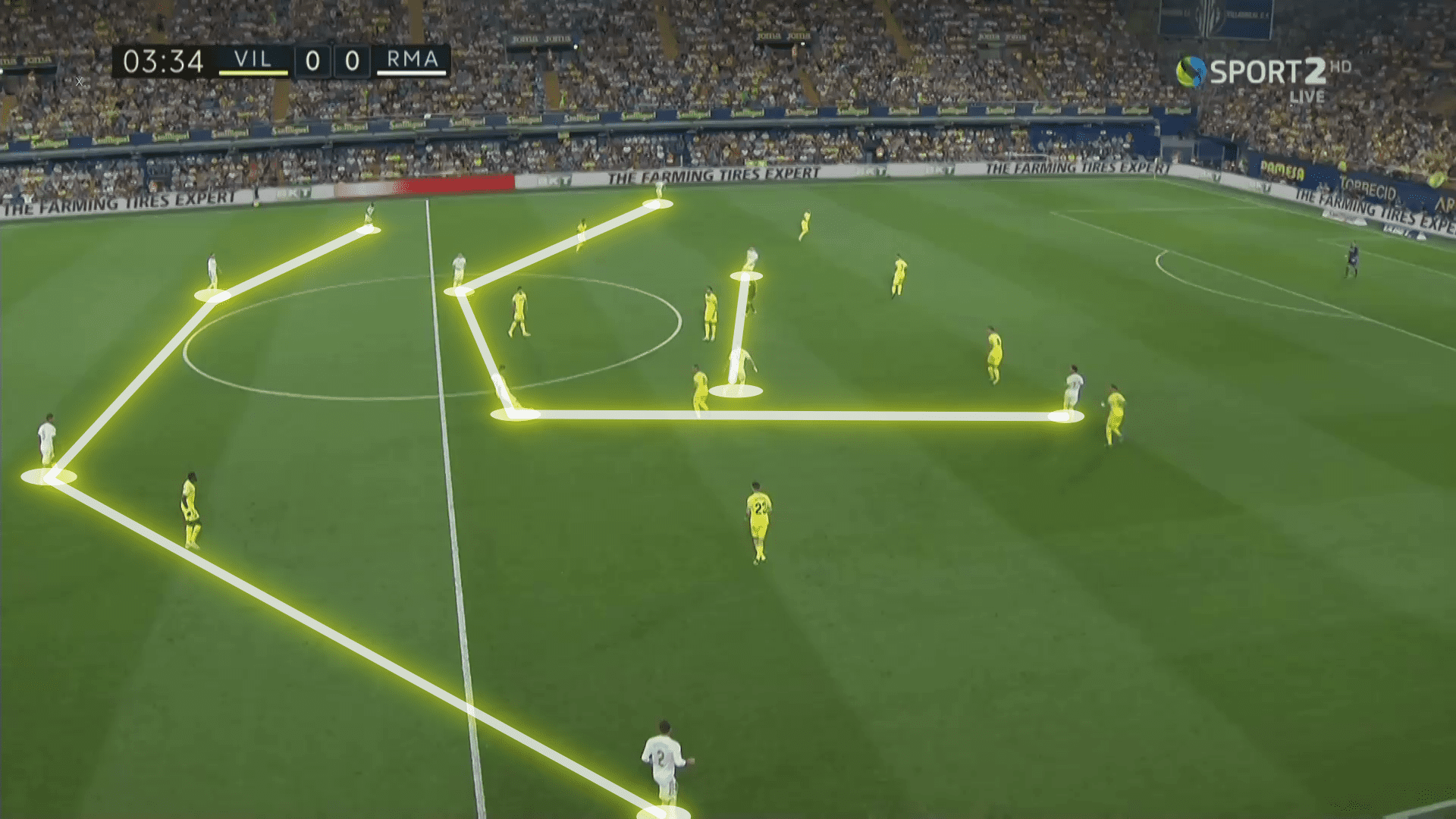
Barcelona have acted similarly.
With a shallow squad and few wide options in attack, Ernesto Valverde and Quique Setién have trialled a diamond midfield with four central midfielders behind a front two of Messi and one other, usually Suárez when fit.
This has allowed Barcelona to dominate possession more easily, but it has also contributed to their struggle to break down teams that defend in low blocks.
Barcelona’s play has become turgid without width or pace in attack as Jordi Alba and Nelson Semedo struggle to be as clinical when moving forward down the flanks.
4-4-2 at Camp Nou has been an option almost forced upon both coaches due to the players available to them, but it has never been the solution to Barcelona’s struggles.
4-4-2 Formation Fever In La Liga: Who Refuses It …
Only two sides didn’t register 4-4-2 among their three most frequently used formations in 2019/20: Sevilla and Real Sociedad.
4-3-3, 4-2-3-1 and 4-1-4-1 have dominated for these two teams, although in different order of preference.
In the case of Real Sociedad, their preferred 4-2-3-1 can often resemble a 4-4-2.
It is perhaps surprising that, given the good form of both Willian José and Alexander Isak, particularly late on in the season, Imanol Alguacil never trialled a 4-4-2, but he has stuck to his preferred shape throughout the campaign.
Portu has provided a crucial role, acting as an offensive midfielder, interchanging with Martin Ødegaard as the more attacking central figure, supporting a lone striker.
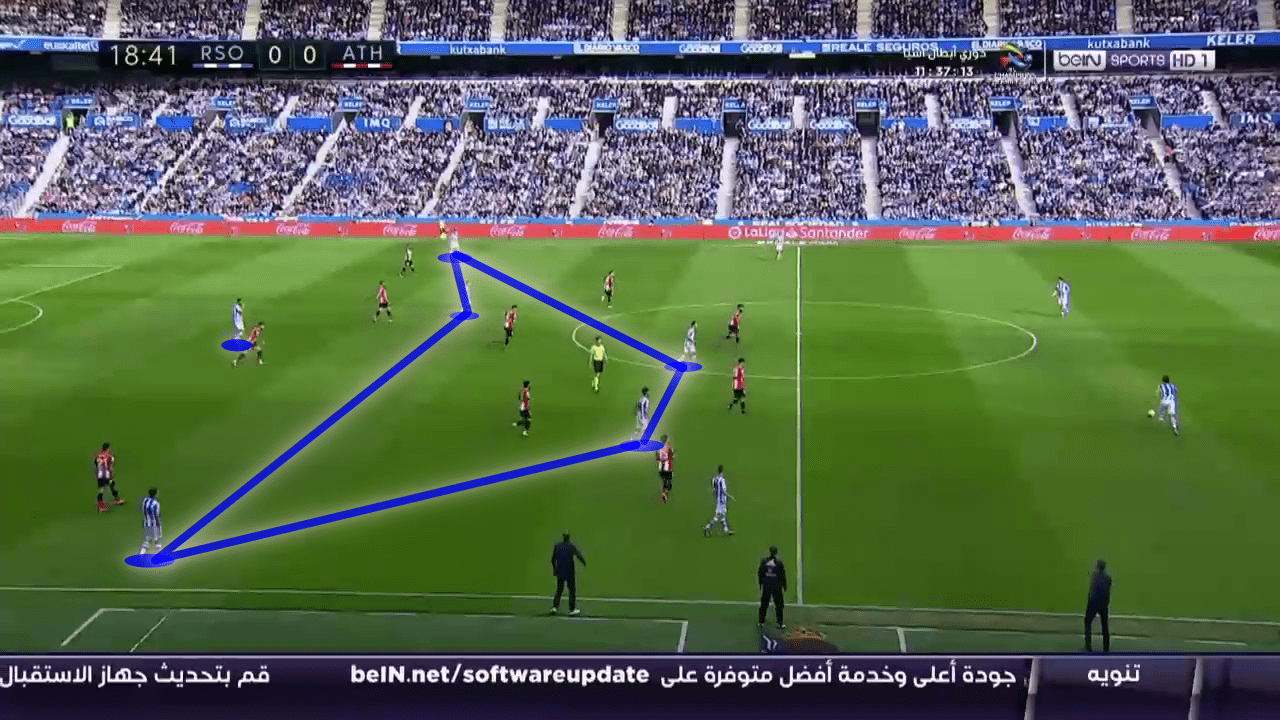
Sevilla also avoids a 4-4-2 formation because its squad is not built for this system.
Luuk de Jong and Youssef En-Nesyri are two target men strikers who would struggle to connect if playing together.
Julen Lopetegui’s only attack options are wide men like Lucas Ocampos or Munir El Haddadi.
As such, Lopetegui almost always sticks to a one-man attack or a front three, often choosing to overload the midfield or defence in central areas to afford more width and freedom to his marauding full-backs.
Conclusion
Many teams have enjoyed success through their approach this season, and 4-4-2 is once again in fashion in Spain.
The trend has also spread to Segunda División, where most teams have again stuck to this formation.
4-4-2 has once again established itself as a valid choice in Spain, even for teams at the very top of the league.
The approaches taken by Javi Gracia at Valencia and Emery at Villarreal will be most intriguing in terms of this formation’s future as the leading one within Spain.
Both are strong sides pushing for Europe and even the top four, but they have made changes in the dugout and their squads this summer.
It will be intriguing to see whether the new players they bring in will fit into the same system.
A switch to a Real Sociedad or Sevilla-style 4-2-3-1 is perhaps more likely, only further promoting the idea that 4-4-2 will remain limited to a few sides towards midtable and fighting against the drop.





Comments